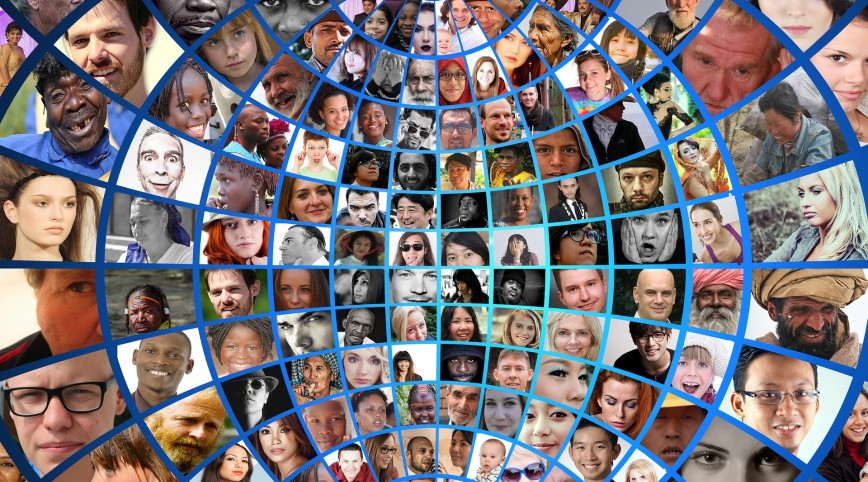Lithuania has been cooperating with various international organizations for many years – this year marks the thirtieth anniversary of Lithuania’s participation in the activities of the United Nations. After the restoration of independence, Lithuania was happy due to the support provided by these organizations, and after becoming a member of the European Union, it became a donor country instead of the beneficiary and gets used to providing support to less developed countries – as it is known international organizations become important implementers and partners of such support.
Having become the Executive Director of the Lithuanian National Committee of the United Nations Children’s Fund (UNICEF) this year, I have the opportunity to get to know the “kitchen” of international organizations from the inside – I will share my impressions about its peculiarities*.
Although most international organizations in our country have become the most famous and effective, there are also lesser-known ones. Finally, it is not easy to judge the biggest and most active ones looking the side – each of them is different and it is not easy to measure and compare them using one criterion. The UNICEF family where I am happy to be is large and varied. The organization was founded after the Second World War (this year marks the 75th anniversary), operates in 190 countries and territories, employs over 16,000 employees – and, of course, there are volunteers as well! A multi-faceted giant organization with offices on different continents – working here means understanding different cultural differences, not to mention adapting the pace of work to different time zones.
I will not be mistaken in saying that the strength of major international organizations lies in brand awareness, well-developed organizational infrastructure, the ability to achieve enormous change in a short time. UNICEF is one of the most recognizable agencies in the United Nations representing its activity (as evidenced by plenty market research) – but at the same time, it is also unique. UNICEF is special as it does not receive funds from the United Nations budget – its activities are based on voluntary contributions from donors, business funders, funds and governments.
Moreover, operating in a decentralized manner, UNICEF cooperates with independent associations or funds – national UNICEF committees in the developed countries whose the main purpose is to invite the public to help implement UNICEF’s mission and raise the necessary funds. In accordance with national agreements with UNICEF and the joint multi-annual strategic plan, these NGOs operate as a family, maintaining a unified identity, rules of activity and bringing the collected “dowry” into joint garner. There are “giants” among the national committees – the U.S. UNICEF ranks a high 27th on Forbes’ annual list of American non-profit organizations, raising 568 million dollars in 2020 (the U.S. Red Cross is 15th, “Save the Children” 38th, Salvation Army – 4th); the Swedish UNICEF National Committee has close to a hundred of employees. Meanwhile, we are the smallest in Lithuania, and there is no UNICEF in neighboring Latvia and Estonia.
Over 40 percent of funds raised by UNICEF come from the private sector. The successful results of recent years suggest that this part will soon increase up to 60. Donors’ funds given for the main mission of the organization periodically (monthly) are called golden – they help to respond operatively to natural and humanitarian disasters, where not even days but hours are important for the provision of support. Indeed, few organizations in the world have developed the ability to provide vital support to hundreds of thousands of people in a short time. To do this, it is necessary to have the prepared infrastructure – UNICEF is famous for the world’s largest (20 thousand m2) humanitarian aid warehouse in Copenhagen, accommodating 36 thousand pallets. UNICEF is one of the partners in the international system for the supply of Covid-19 vaccines to countries around the world – thanks to its infrastructure, UNICEF plans to deliver 2 billion doses of the vaccine to lower-income countries by the end of this year – due to its ability to deliver medicines and other essential commodities to the outermost regions (often by special ships, pack-animals or drones) countries to deliver 2 billion doses of the vaccine.
It’s no surprise that such a global dramatic fight against the deadly virus requires billions donated by tens of millions of donors, whom you would probably not separate from many Lithuanians on the street.
I will probably not be mistaken in saying that in decades of Soviet oppression, the culture of philanthropy has been disrupted and has to be rebuilt by the pursuing countries of the Western world. The complexes of a “small agrarian” or “post-communist” country are still “difficult to kill”, especially in terms of the attitude of the older generation people towards support and volunteering. If the donors of the older generation and volunteers are a major pillar of developed free world philanthropic or humanitarian organizations, the participation of people of this age in our region is limited not only by values attitudes but also by higher indices of deprivation. Nevertheless, the excellent results of Poland, the Czech Republic or Slovenia provide hope for a rapid pursuit of the “Western” standard.
We still have an unusual and active (to others looking maybe even aggressive) fundraising practice. Often in a center of a European big city, you will surely meet a few volunteers raising funds on the streets or in supermarkets or asking to sign petitions. In Vilnius, not to mention other cities, you will not call it an everyday image yet.
The foundations of a wide base of sympathizers and funders were laid by many years of the patient and simple work by volunteers-assistants in fundraising by walking door-to-door, sending donation letters that invite them to purchase sponsorship postcards or souvenirs. Let’s face it, we are still learning these methods of the work – and we usually do this by following the example of activists from international organizations operating in our country, who in turn have a good practice and more experienced colleagues in the Western countries. However, newer countries surprise due to their rapid and dynamic adaptation and learning – so the skills gap will hopefully be eliminated soon. Here, we have Iceland that is a small country friendly to us; it has the highest percentage of UNICEF’s donating population – 27% of Icelanders donate periodically to this international organization. Icelandic. So while we talk a lot about the negative impact of decades of traumatic oppression on our societies’ ability to cooperate, rejoice and share happiness – the young generations growing up in an open global world are easily freed from this heritage. The results of the lesser-known countries in the world of philanthropy are astonishing. For example, in China, when a pandemic started, the TikTok platform attracts 100,000 donors every month; South Korea, Hong Kong, Japan or Turkey are among the most successful fundraisers.
Because of their scale, international organizations are not only able to run the biggest campaigns with the world’s brightest stars (celebrities and influencers who agree to be Goodwill ambassadors are a key to success in mobilizing societal solidarity on all continents) – CEOs and competent persons with vast experience in international corporations come to work in organizations. International organizations are well aware of the need to invest in the most modern technologies and know-how in raising funds, therefore, the astonishing efficiency in fundraising is not surprising. Yes, gifts of impressing size from the world’s most famous wealthy philanthropists (Bill Gates and others) or the largest corporations are surprising and fascinating, but the lion’s share is brought in by millions of ordinary donors, donating hundreds. International organizations are well versed in raising niche support (wills, religious communities, cryptophilantropy), which is difficult for “ordinary” non-governmental organizations.
Thanks to purposeful investments in fundraising, international organizations are also at the forefront of innovation. Business companies are being offered to move from sponsorship to investment and to purchase “insurance policies” in order to implement an emergency intervention in crisis-stricken countries. In this way, not only a reserve in advance is accumulated to deal with the consequences of disasters operatively, but also systems are being developed to accurately predict and prepare for possible natural cataclysms. With such humanitarian investments, international companies insure themselves against the painful consequences, which often affect their performance results in one or another region as well. Innovations are being developed not only in the area of finance but also in education or ecology, enabling organizations to deliver the most advanced and effective forms of aid, which in turn make them even more attractive to funders and donors.
This is how an increasingly efficient circle of efficiency revolves. With the onset of a pandemic and the restrictions of physical fundraising activities, international organizations are rapidly digitizing processes, reaching loyal and new funders and even higher results.
Of course, being a large organization is also challenging. Working in different countries requires diplomacy in interaction and cooperation with governments or groups involved in the conflict. Adherence to the procedures and rules of a large organization can be a burden in smaller branches. Prescreening of business funders, provision and protection of data, maintaining an intimate relationship with funders, sensitive and at the same time non-stigmatizing coverage of the situation of the beneficiary groups – these and other challenges lie with the organizers of fundraising.
In conclusion, I would like to wish – let’s learn from international organizations, let’s use their best examples. The big and the strong ones have an honorable duty to lead the line. Like locomotives, I believe they attract characters of the philanthropic field in our countries, helping to pave corridors and cut corners to reach and even surpass standard averages.
* it should be emphasized that my observations are to be considered subjective – working in large organizations takes a lot of time to fully understand all aspects and nuances.




